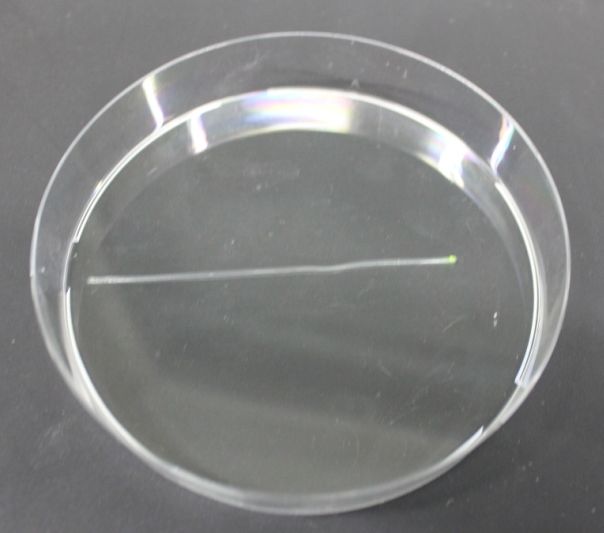Team:ETH Zurich/Process/Microfluidics
From 2011.igem.org
(Difference between revisions)
(→Microfluidic channel without flow) |
(→Microfluidic channel without flow) |
||
| Line 30: | Line 30: | ||
{|style="border: none;" align="center" | {|style="border: none;" align="center" | ||
| - | |valign="top"|[[File:ChannelPhoto.jpg|400px|center|thumb|'''Photo of the channel in action.''' The channel (the long tube at the right) is physically attached to a reservoir filled with the sample medium containing acetaldehyde or xylene. In the case of acetaldehyde, the whole setup is packed in an impermeable plastic bag to significantly reduce the vaporization of acetaldehyde.]] | + | |valign="top"|[[File:ChannelPhoto.jpg|400px|center|thumb|'''Photo of the channel in action.''' The channel (the long thin tube at the right) is physically attached to a reservoir filled with the sample medium containing acetaldehyde or xylene (the Eppendorf tube at the lower left). In the case of acetaldehyde, the whole setup is packed in an impermeable plastic bag to significantly reduce the vaporization of acetaldehyde (not shown).]] |
|valign="top"|[[File:ChannelBlank.jpg|400px|center|thumb|'''After the experiment, the physical channel is removed from the agerose medium containing the cells.''' The bald interior of the channel is placed on a petri dish (see picture) and analyzed under a fluorescence microscope.]] | |valign="top"|[[File:ChannelBlank.jpg|400px|center|thumb|'''After the experiment, the physical channel is removed from the agerose medium containing the cells.''' The bald interior of the channel is placed on a petri dish (see picture) and analyzed under a fluorescence microscope.]] | ||
|} | |} | ||
Revision as of 00:31, 22 September 2011
| Microfluidics |
| ||
|
We relatively early figured out that we need a some kind of channel to establish the acetaldehyde or xylene gradient needed for SmoColi (see Circuit Design). However, there were several different channel designs possible, and the final design evolved through an iterative series of design steps and design validations. The first designs were validated based on vast simulations, the final design furthermore by biological experiments in the lab (see Systems Validation). | |||
First Channel DesignsMicrofluidic channel with flow and recycling of the medium
|
 "
"




